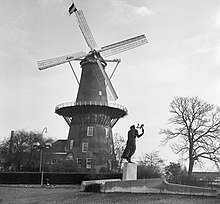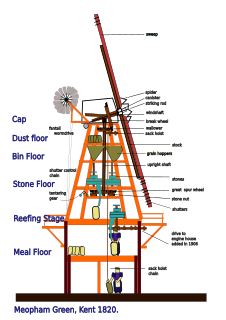
This glossary of mill machinery covers the major pieces of machinery to be found in windmills, watermills and horse mills. It does not cover machinery found in modern factories.

The Grutte Mûne is a smock mill in Broeksterwâld, Friesland, Netherlands which has been restored to working order. The mill is listed as a Rijksmonument, number 11679.
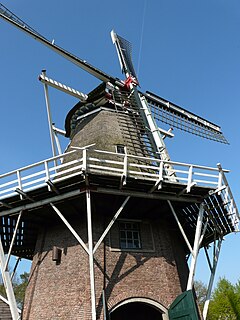
The Havelter Molen is a smock mill at Havelte, Drenthe, the Netherlands which was built in 1914 and has been restored to working order. The mill is listed as a Rijksmonument, number 21029.

The Molen van Makkum is a smock mill at Makkum, Drenthe, the Netherlands which has been restored to working order. The mill is listed as a Rijksmonument, number 8889.

Albertdina is a smock mill in Noord-Sleen, Netherlands. It was built in 1906 and is listed as a Rijksmonument, number 33783.

De Hoop is a smock mill in Norg, Drenthe, the Netherlands. It was built in 1906 and is listed as a Rijksmonument, number 30781.
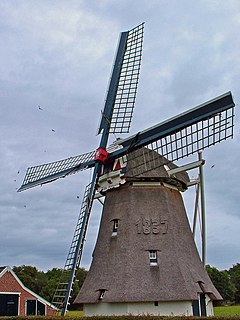
De Zwaluw is a smock mill in Oudemolen, Drenthe, the Netherlands. It was built in 1837 and is listed as a Rijksmonument, number 38148.

Zeldenrust is a smock mill in Zuidbarge, Drenthe, which has been restored to working order. The mill was built in 1857 and is listed as a Rijksmonument, number 14968.

De Hoop is a smock mill in Dokkum, Friesland, Netherlands which was built in 1849 and has been restored to working order. The mill is listed as a Rijksmonument, number 13186.

Zeldenrust is a smock mill in Dokkum, Friesland, Netherlands which was built in 1862 and has been restored to working order. The mill is listed as a Rijksmonument, number 13097. The name translates as, "Seldom at rest."

Welgelegen or Tjepkema's Molen is a smock mill in Heerenveen, Friesland, Netherlands, which was built in 1849 and has been restored to working order. The mill is listed as a Rijksmonument, No. 21171.
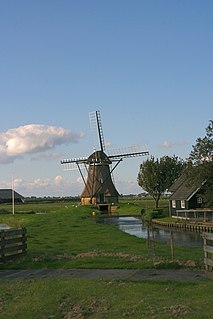
De Huinsermolen is a smock mill in Húns, Friesland, Netherlands which was built in 1829. The mill has been restored to working order. It is listed as a Rijksmonument, number 8530.

De Bullemolen English: The Executioner's Mill is a smock mill in Lekkum, Friesland, Netherlands which was built in 1825. The mill has been restored to working order and is listed as a Rijksmonument, number 24505.

De Grote Molen is a smock mill in Marrum, Friesland, Netherlands which was built in 1845. The mill has been restored to working order. It is listed as a Rijksmonument, number 15637.
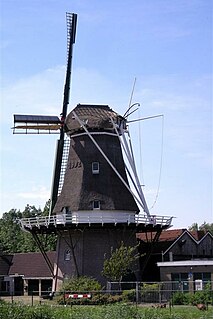
De Hoop is a smock mill in Stiens, Friesland, Netherlands which was rebuilt in 1993 after the earlier mill burned down. It is operational and manned by volunteers.

Wijnsermolen is a smock mill in Wyns, Friesland, Netherlands which is currently (2011) being restored to working order. The mill is listed as a Rijksmonument, number 35691.

Fatum is a drainage mill near the village of Tzum, Friesland, Netherlands. It is a hollow post windmill of the type called "spinnenkop" by the Dutch. The mill is listed as a Rijksmonument, number 15876 and is in working order though it can no longer be used for drainage.

The Braamse Molen or Koenders Möl is a tower mill in Braamt, Gelderland, Netherlands which was built in 1856. One of only two mills in the Netherlands fitted with Beckers sails, the mill is listed as a Rijksmonument.

De Prins van Oranje is a tower mill in Bredevoort, Gelderland, Netherlands which was built in 1870 and has been restored to working order. The mill is listed as a Rijksmonument.

De Kempermolen is a tower mill in Breedenbroek, Gelderland, Netherlands which was built in 1882 and has been restored to working order. The mill is listed as a Rijksmonument.
























